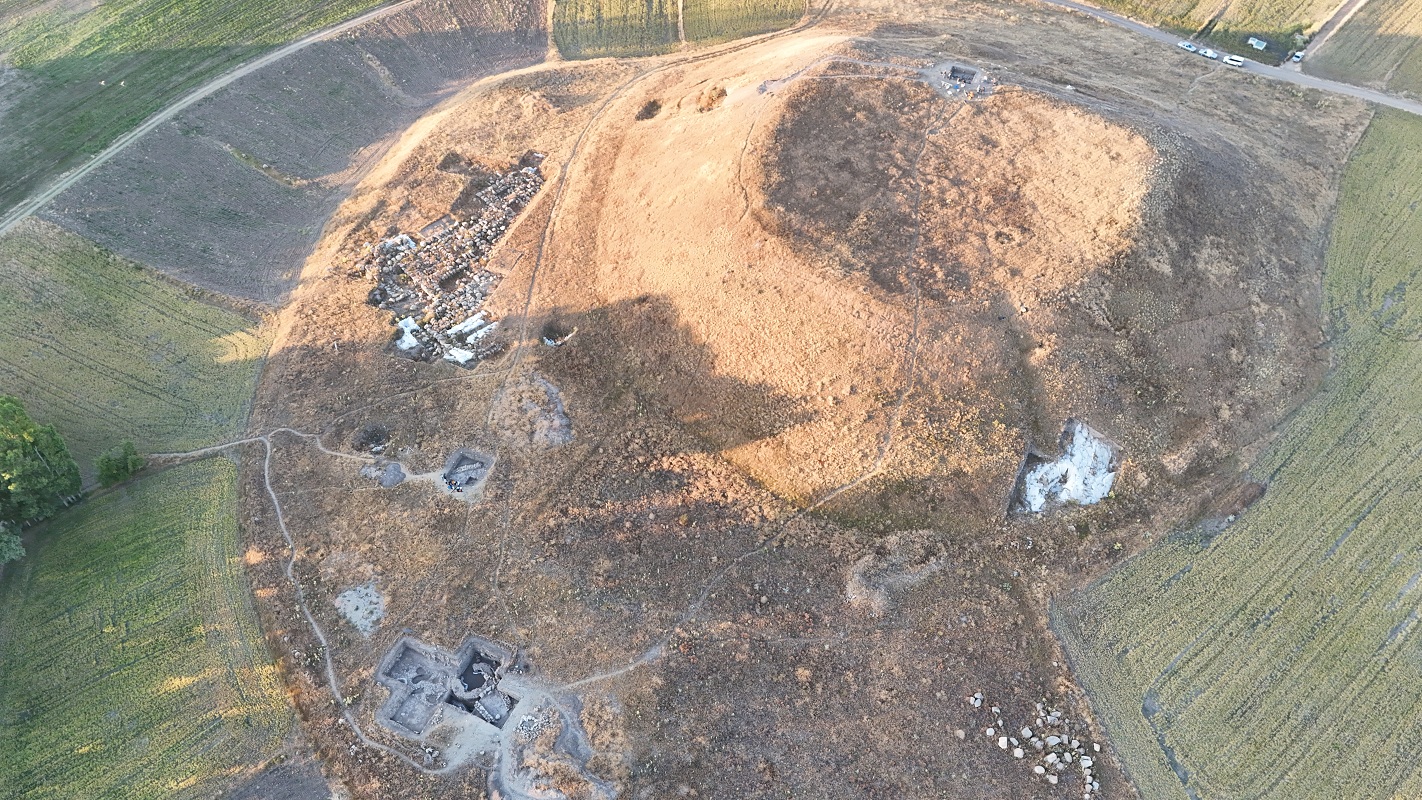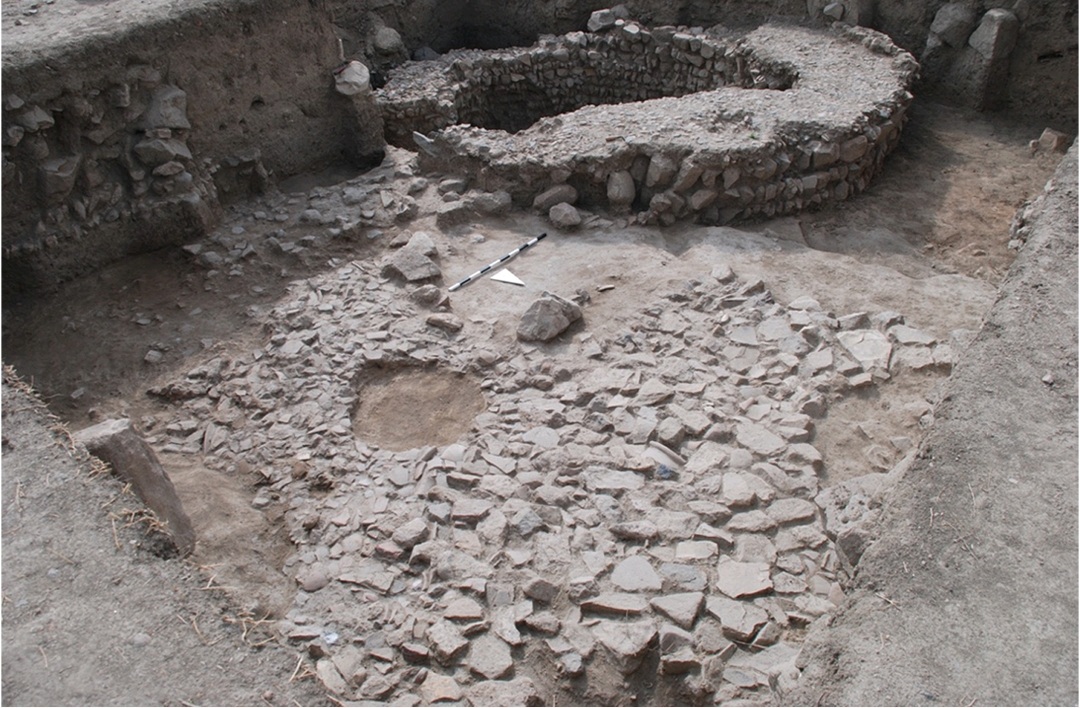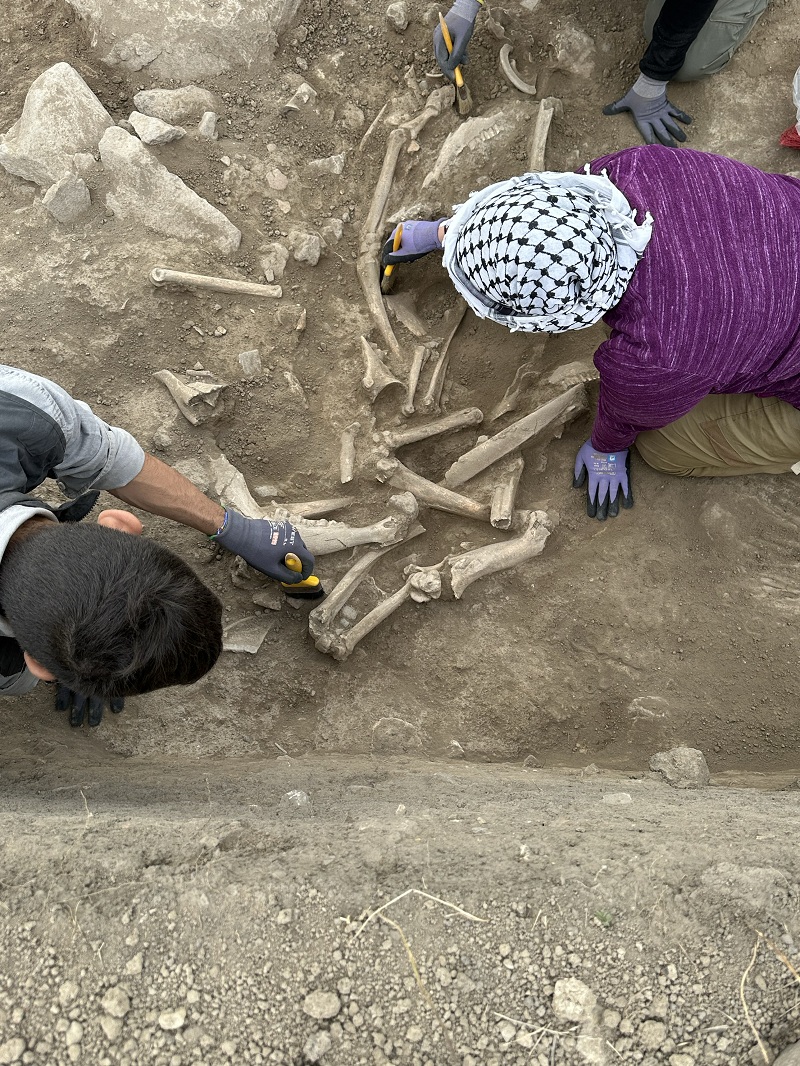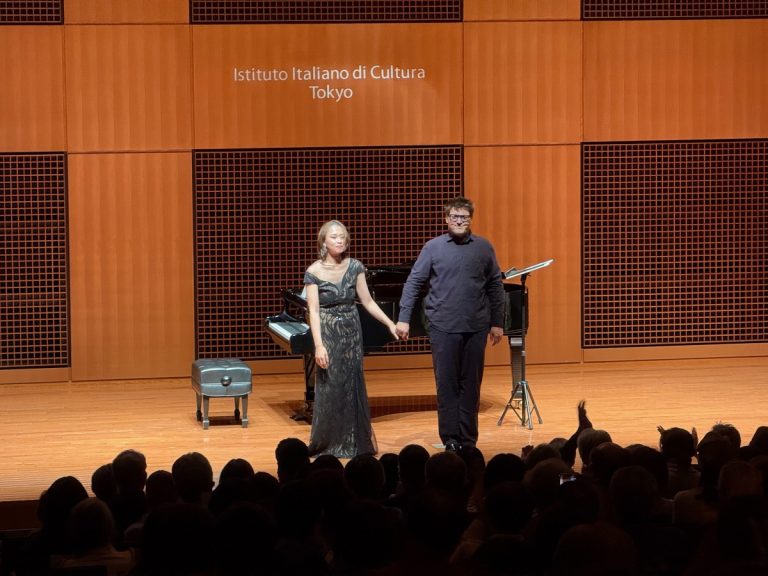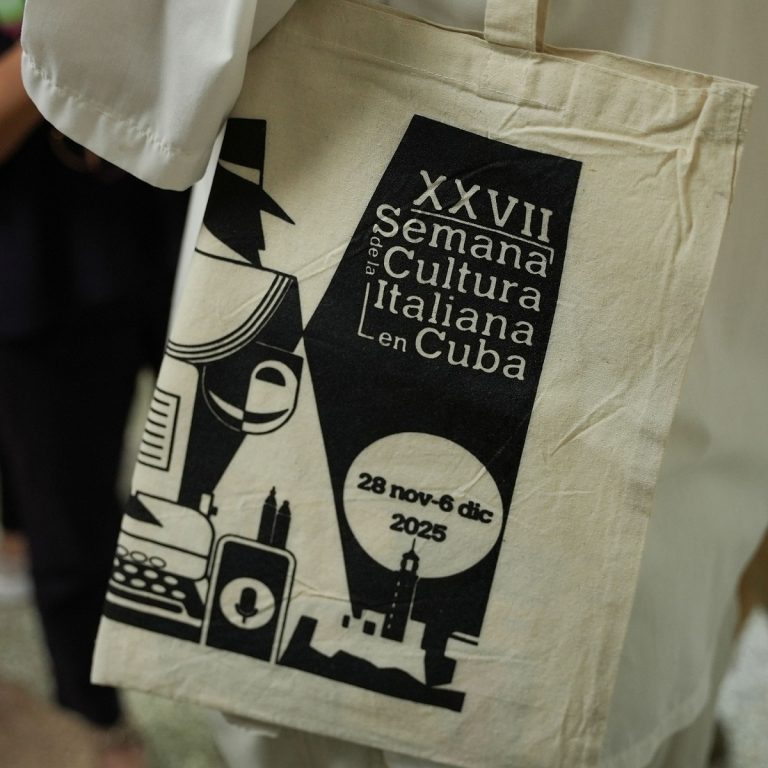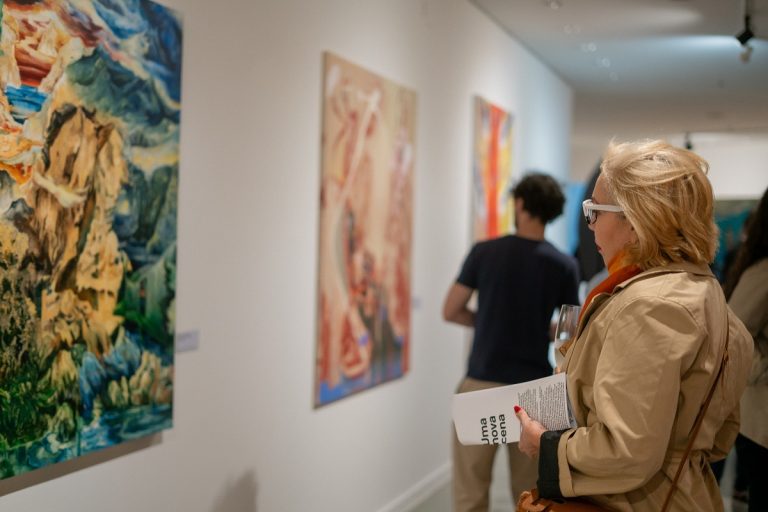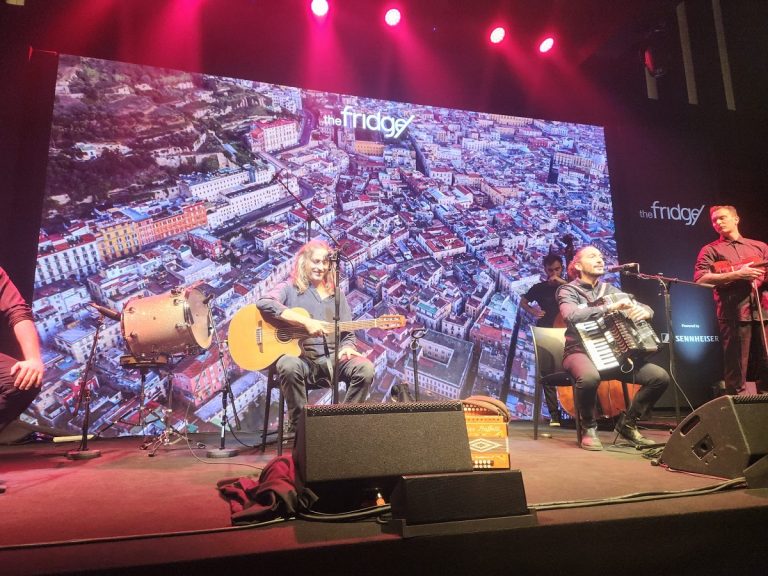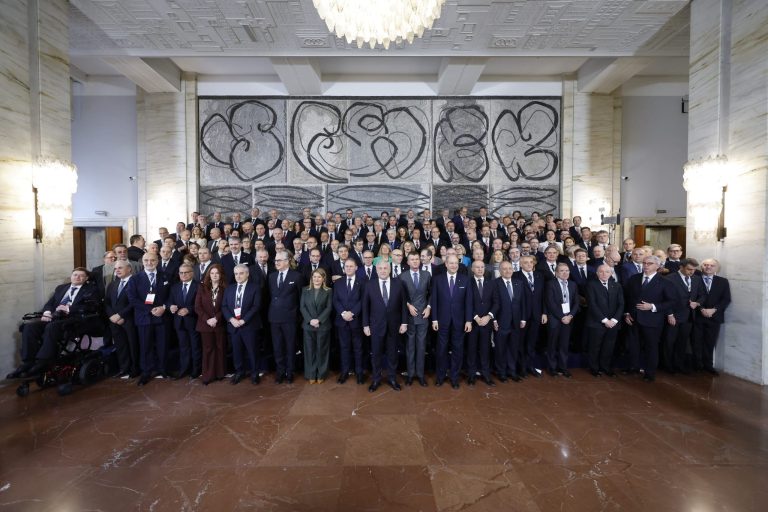The 2025 excavation season at Uşaklı Höyük, in the heart of Anatolia, has brought to light important new evidence in Area F, one of the sectors linked to the Hittite occupation of the site (15th-13th centuries BCE). Since 2021, archaeologists have been investigating a distinctive stone construction, known as the “Round Structure,” which continues to provide surprising results.
A unique construction in the Anatolian landscape
The structure consists of a horseshoe-shaped wall built with stones of various sizes, carefully adapted to the steep and irregular terrain. Its interior is filled with accumulations of earth, pottery fragments, and animal bones, while outside the wall archaeologists have identified successive reconstructions of floors. The cobbled top of the wall was walkable and connected to an open paved area. For its form and characteristics, the structure has no direct parallels in other contemporary Anatolian sites, making it a unique and still mysterious feature.
A ritual space?
The function of the Round Structure remains uncertain. Some evidence suggests it was a special area, intended for rituals and offerings. Its location, not far from the large Building II – probably a temple dedicated to the Storm God – strengthens the hypothesis of a connection with cultic practices. A Hittite ritual text referring to the Storm God of Zippalanda describes ceremonies conducted by a river, in a grove, and in the garden of a “house,” for the protection of the royal couple, mentioning a pit where animals were sacrificed. The position of the Round Structure – close to the river at the foot of the site and near the probable temple, in relation to which there may have been a large open space – recalls in a suggestive way the scenario described in the ritual. Whether the stone circle, walked upon by an officiant during ritual actions, might have been perceived as a pit remains, for now, only a working hypothesis.
The courtyard of the unburied infants
The most significant new discovery is the skeletal remains of at least seven children, found in association with layers of ash, animal bones, and fragments of ceramic vessels. These are not formal burials but irregular depositions, scattered or placed together with other materials in connection with the paved space adjacent to the Round Structure. Among the finds, an infant tooth stands out, as it will provide precise dating and allow ancient DNA analysis, contributing to unique biological insights into the populations who lived at the site during this period. This context raises important questions, made even more relevant by the scarcity of Hittite written sources on rituals related to deceased children and by our still limited knowledge of funerary practices.
A project of research and cooperation
Research at Uşaklı, ongoing since 2008 thanks to a permit from the Turkish Ministry of Culture and Tourism and supported by the Italian Ministry of Foreign Affairs and International Cooperation, brings together an international team of scholars in reconstructing the long history of the site, inhabited from the 3rd millennium BCE to the medieval period. The project is coordinated by the University of Pisa, in collaboration with Koç University ANAMED, the University of Florence, UCL, and Bozok University in Yozgat.

